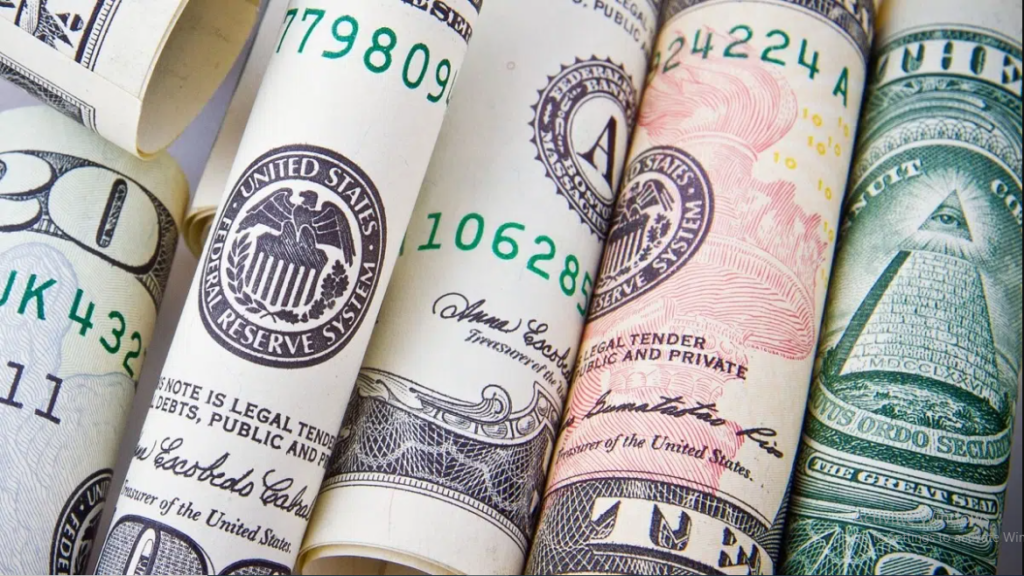The United States Dollar (USD) is correcting from weekly lows as bulls find their footing amid broad risk-aversion. Rising tensions over the approaching US debt ceiling deadline and a lack of clarity on the Federal Reserve (Fed) interest rates outlook weigh the market sentiment. Investors readjust their US Dollar positions, bracing for a week of high-profile quarterly earnings and closely watched economic data from the United States.
Earnings this week include a spate of potential market movers, including tech and tech-adjacent Alphabet Inc, Microsoft Corp, Meta Platforms Inc, and Amazon.com. On the macroeconomic front, the first quarter Gross Domestic Product (GDP) and April Personal Consumption Expenditures (PCE) Price Index will be closely scrutinized in the second half of this week. In the meantime, the mid-tier US Conference Board Consumer Confidence data and housing data will entertain US Dollar traders.
The US Dollar Index, which tracks the USD performance against a basket of six major currencies, trades marginally higher on the day, near 101.50.
Daily digest market movers: US Dollar sellers take a breather
- On Monday, the Federal Reserve Bank of Chicago announced that the National Activity Index remained unchanged at -0.19 in March. Meanwhile, the Federal Reserve Bank of Dallas’ Texas Manufacturing Survey showed that the headline Business Index plunged to -223.4 in April from -15.7 in March.
- Wall Street’s leading indices closed mixed on Monday, as Nasdaq underperformed on worries about tech earnings ahead.
- Troubled US bank First Republic Bank shares sank over 20% after market hours, as it said deposits plunged by more than $100 billion in the first quarter.
- Concerns persist over the approaching US debt ceiling deadline. This week, the House of Representatives will vote on a Republican-led debt and spending bill.
- 10-year US Treasury bond yields keep falling toward 3.40% after breaching the 3.50% critical level on Monday.
- Markets are currently pricing a roughly 90% probability of a 25 basis points Federal Reserve (Fed) rate hike at the upcoming meeting, according to the CME Group FedWatch Tool.
- The Fed is in the blackout period ahead of its May 3 monetary policy announcements.
- This Tuesday, the Conference Board’s Consumer Confidence data for April from the United States will be reported alongside the New Home Sales data.
- Earnings from US tech giants Microsoft Corp, which backs ChatGPT, and Google parent Alphabet Inc, top the watchlist on Tuesday.
- On Thursday, the US Bureau of Economic Analysis will unveil the first estimate of first-quarter GDP growth. The US economy is forecast to expand at an annualized rate of 2% in Q1, down from the 2.6% recorded in the last quarter of 2022.
Technical Analysis: US Dollar Index Remains Vulnerable
The US Dollar Index (DXY) challenges the 101.50 psychological level on recovery from weekly troughs. The recovery could gain traction if DXY yields a daily closing above the bearish 21-Day Moving Average (DMA). It is worth noting that the index has failed to settle above the 21 DMA since March 15 on a daily candlestick closing basis.
Acceptance above the latter could initiate a new upswing toward the 102.50 psychological barriers, beyond which the confluence of the downward-sloping 50 and 100 DMAs at around 103.30 will be on buyers’ radars.
With the 14-day Relative Strength Index (RSI), however, still below the 50.00 level, the recovery attempts in DXY are likely to be sold into. Immediate support is seen at the intraday low of 101.19, below which the 101.00 round number will challenge the bullish commitments. Deeper declines will seek validation from the multi-month low reached on April 14 at 100.78.
How is US Dollar correlated with US stock markets?
US stock markets are likely to turn bearish if the Federal Reserve goes into a tightening cycle to battle rising inflation. Higher interest rates will ramp up the cost of borrowing and weigh on business investment. In that scenario, investors will likely avoid taking high-risk, high-return positions. As a result of risk aversion and tight monetary policy, the US Dollar Index (DXY) should rise while the broad S&P 500 Index declines, revealing an inverse correlation.
During times of monetary loosening via lower interest rates and quantitative easing to ramp up economic activity, investors are likely to bet on assets expected to deliver higher returns, such as shares of technology companies. The Nasdaq Composite is a technology-heavy index, and it is expected to outperform other major equity indexes in such a period. On the other hand, the US Dollar Index should turn bearish due to the rising money supply and the weakening safe-haven demand.

